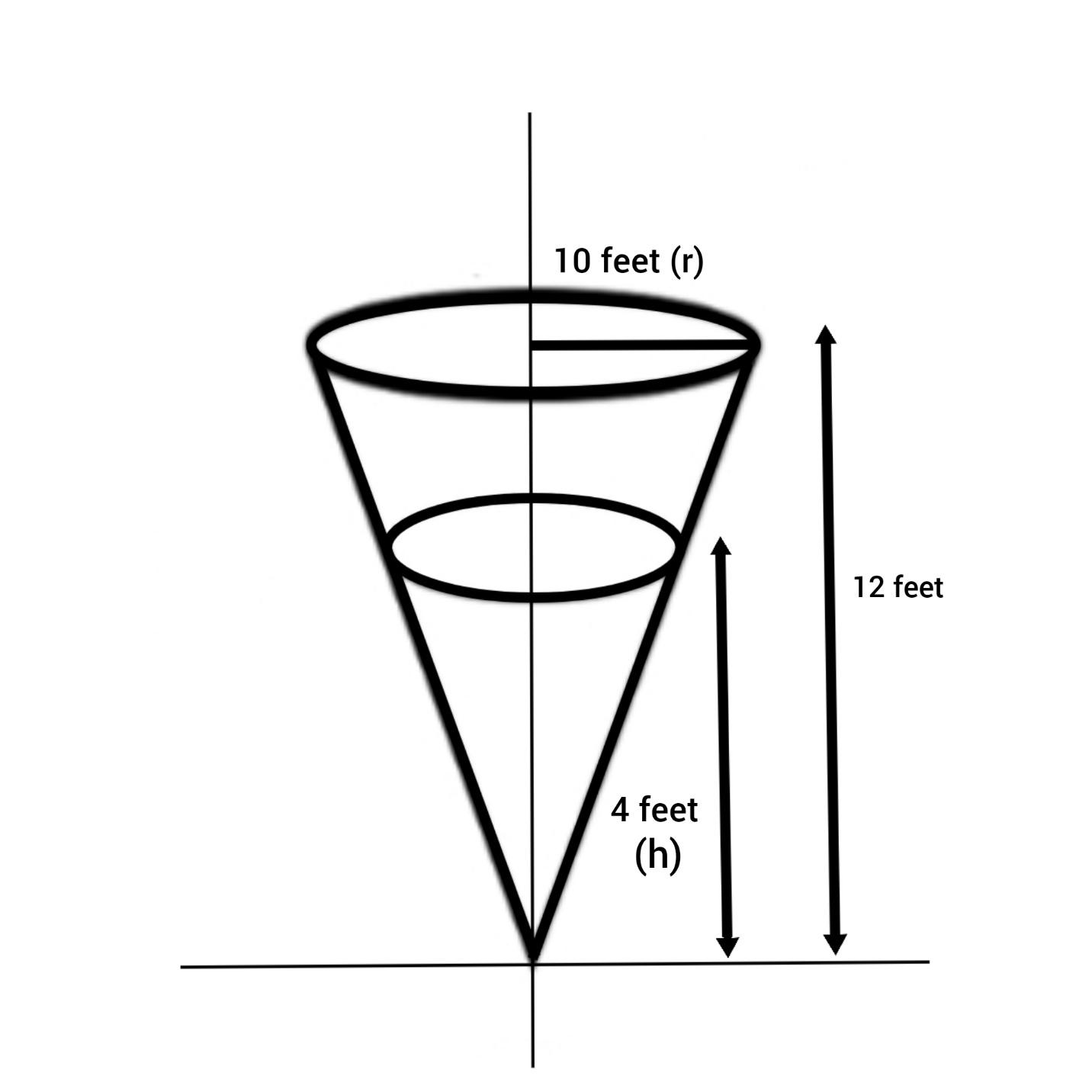Question
Question: A conical tank (with vertex down) is \[10\] feet across the top and \[12\] feet deep. Water is flowi...
A conical tank (with vertex down) is 10 feet across the top and 12 feet deep. Water is flowing into the tank at a rate of 5 cubic feet per minute. Find the rate of change of the depth of the water when the water is 4 feet deep.
Solution
In this question,we need to find the rate of change of the depth of the water when the water is 4 feet deep. Given that the radius of the tank is 10 feet. From this, we can find the radius of the tank. Also the height of the tank is 12 feet and the water is 8 feet deep. The rate of change of the depth of the water can be found by differentiating the volume of the cone. The differentiation is nothing but a rate of change of function with respect to an independent variable given in the function. First let us consider the radius of the tank to be r and h be the height of the tank . We need to substitute the value of r in the volume formula. Then on differentiating we can find the rate of change of the depth of the water when the water is 4 feet deep.
Formula used:
The volume of the cone ,
V=31 πr2 h
Where r is the radius of the cone and h is the height of the cone.
Derivative rule used :
dxdxn=nxn–1
Complete step-by-step answer:

Let us consider the radius of the tank to be r and h be the height of the tank .
Given, the conical tank is 10 feet across and 12 feet deep, that is the radius of the tank is 10 feet and height is 12 feet.
r=10
By relating the radius r to the height h ,
⇒hr=1210
Thus r=65h
We know volume of the cone is 31πr2h
V=31πr2h
By substituting r=65h
We get,
V=31π(65h)2h
On simplifying,
We get,
V=10825πh3
On differentiating V with respect to time t ,
We get,
dtdV=10825π(3h2dtdh)
Also given the rate change of volume is 5 cubic feet per minute.
By substituting the value of volume rate,
We get,
5=10825π(3h2dtdh)
We need to find the rate of change of the depth of the water when the water is 4 feet deep,
By substituting the value of h=4 and π=3.14 ,
We get,
5=10825(3.14)(3(4)2dtdh)
On simplifying,
We get,
5=0.719((48)dxdh)
On multiplying the term inside,
We get,
5=34.5dtdh
By rewriting the terms,
We get,
dxdh=34.55
On simplifying,
We get dtdh≈0.146 feet/min
Thus we get the rate of change of the depth of the water is approximately 0.146 feet/min.
Final answer :
The rate of change of the depth of the water is approximately 0.146 feet/min.
Note: Mathematically , Derivative helps in solving the problems in calculus and in differential equations. The derivative of y with respect to x is represented as dxdy . Here the notation dxdy is known as Leibniz's notation . In derivation, there are two types of derivative namely first order derivative and second order derivative. A simple example for a derivative is the derivative of x3 is 3x . Derivative is applicable in trigonometric functions also .
